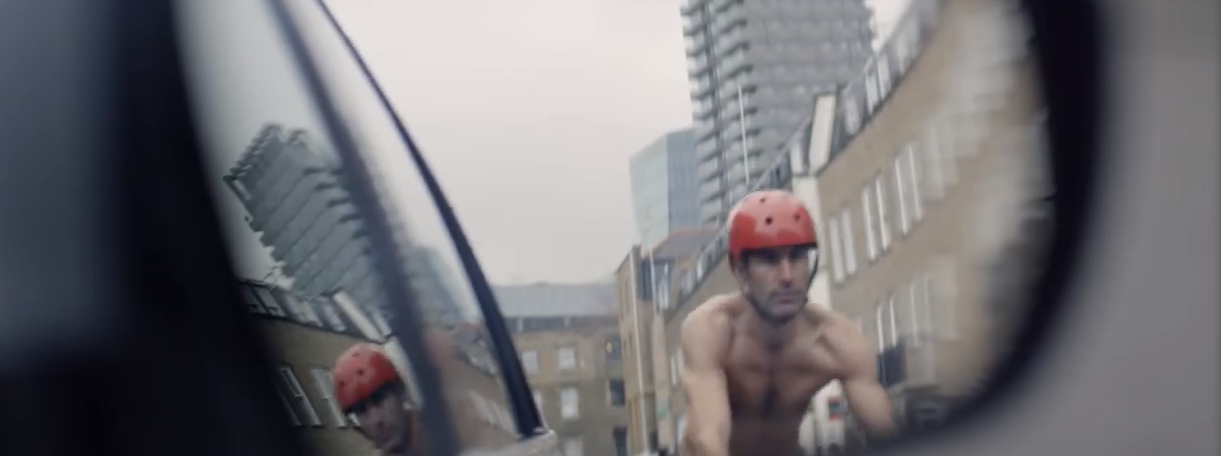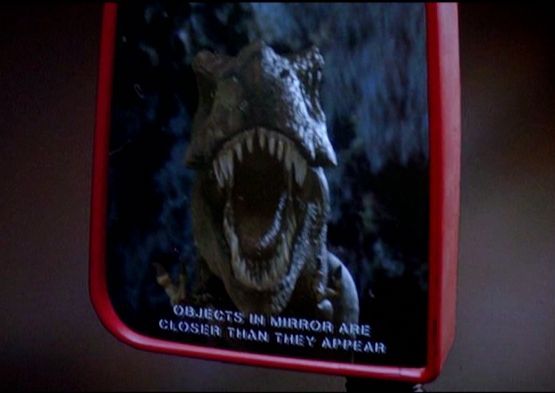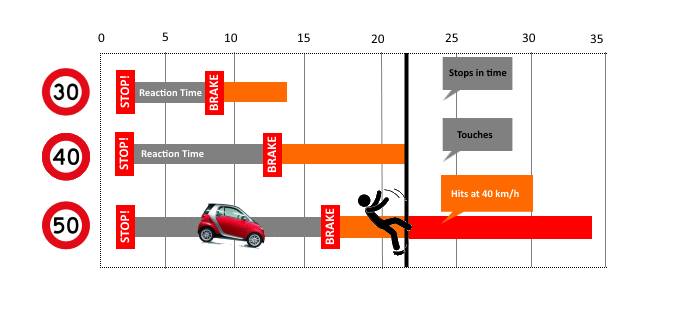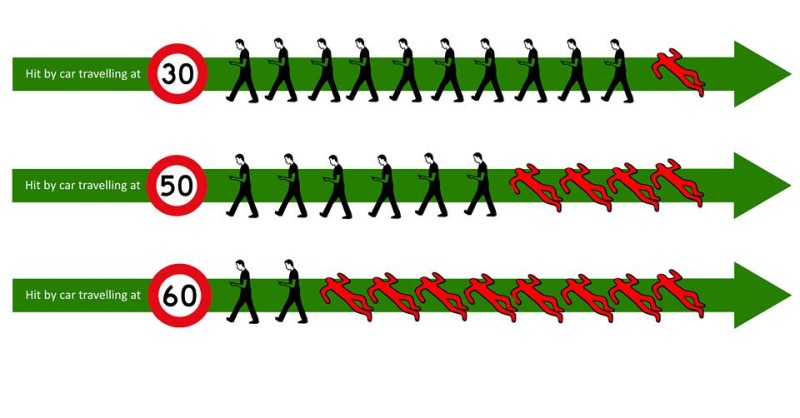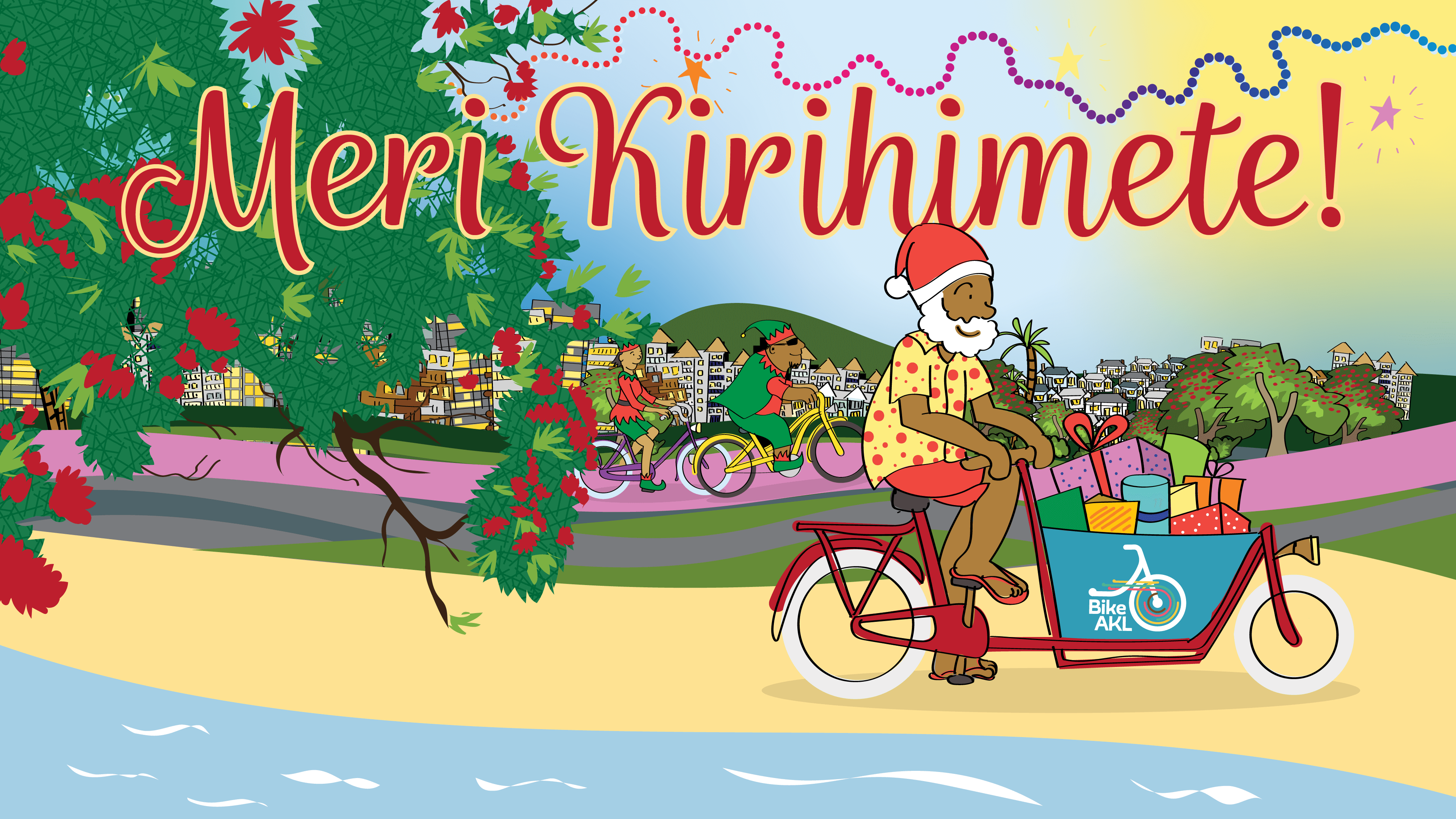In August, London taxi driver Aliraj Miah aka @AllLondonBoy tweeted an alarming snippet of dash-cam footage. The driver’s door of a parked car is flung open, hitting a cyclist, who lands on the road in front of Miah’s taxi. Luckily, Miah has lightning reactions and eyes on the road – and he brakes in time, no permanent harm done.
Footage like that and stories like Anna’s remind us of the human face – and the human cost – of carelessly opening a car door. It’s one of the most common causes of bike crashes in New Zealand. And dooring will be an ever-present worry as long as bike lanes are installed precariously close to parked cars, and whenever cyclists are nudged to the side to let faster traffic past.
What can people on bikes do? We can look out for drivers about to get out of their car – indeed, we’re preternaturally aware of the constant, imminent risk – but it’s getting harder to spot that tell-tale movement, as vans and vehicles with dark glass make it increasingly difficult.
Another common response, often from other cyclists and advocates, is ‘you shouldn’t be in the door zone anyway; take the lane if necessary, it’s legal.’ But Anna’s story, like many others, makes it easy to see how conditions build the risk, and how even the most conscientious ride can be put in a risky position.
Properly separated and buffered bike lanes can remove the risk almost entirely – and they’re on the way, but never quite as quickly as we wish.
So in the meantime, what can drivers and passengers do?
LOOK. That’s what. LOOK TWICE FOR BIKES. It’s in the Road Code:
Anna’s door-opener admitted she hadn’t looked before opening the door. Aliraj Miah’s succinct comment after the London incident was: “Drivers always need to check [the] mirror before opening the door.”
What if every car mirror had a simple message like this near it? Would that help?
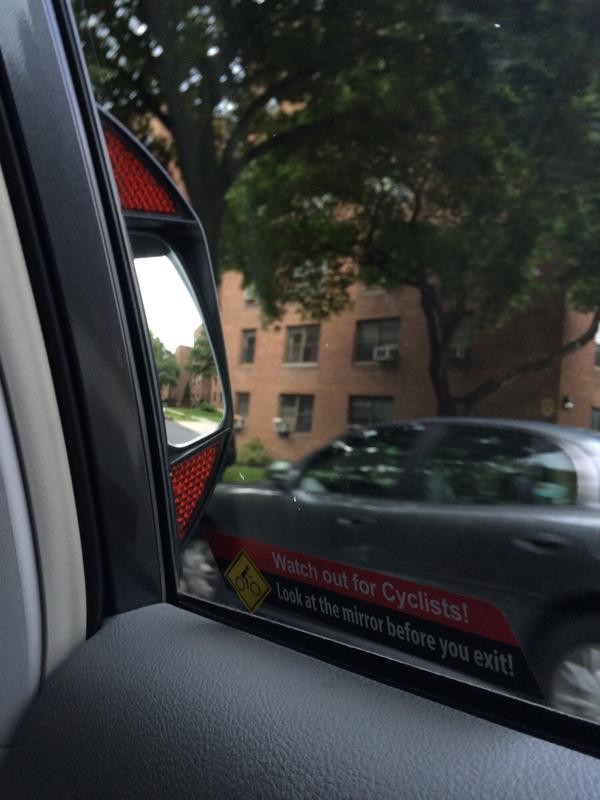
You know what, why aren’t the words LOOK TWICE FOR BIKES sandblasted (or even stickered) onto all wing mirrors, by default? If Steven Spielberg could make a joke about it, why isn’t it true?
In the UK, the AA issued “THINK BIKES” stickers for wing mirrors, along with an eye-catching campaign video to, um, expose drivers to the issue:
There’s also a simple physical trick that actually works.
Whenever exiting a car, use your opposite hand to open the door. So, a driver or anyone on the right side of the car should reach for the door handle with their left hand; the converse for the other side. This obliges you to look over your shoulder, just in case.
Whether you’re a driver or a passenger, teach yourself this habit. Teach your children to do it, too. It may save a life one day. It may save their life one day.
And have the conversation. Just as we all taught each other to be “tidy Kiwis” back in the 70s, we can encourage each other to be kind Kiwis now. On any city street, but especially on a street like Ponsonby Rd (with a 40kph limit and two traffic lanes each way), why rush past people on bikes if they’re riding further out into traffic than you’d like, or even fully claiming the lane? They can see what you cannot: the invisible dooring zone.
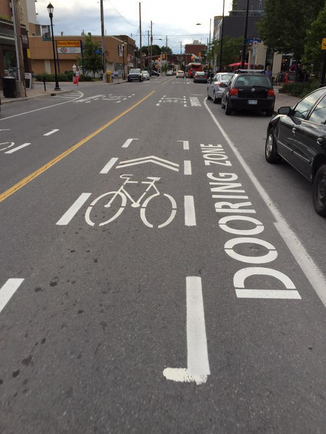
Campaigns that encourage us to see the person, not just the bike, are a key part of the picture:
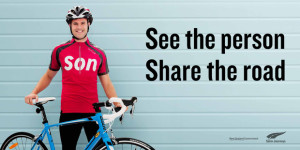
Slower speeds definitely help, too: they lower the stakes of what happens IF someone gets knocked off their bike. (Graphics below via Bike Devonport, who are campaigning for slower speed limits in their village).
And we’ve got to keep demanding streets that work for everyone. Because even at lower speeds, this is still too often what our cities are asking people to do…
A brief explanation of why we need protected bike lanes, not paint: pic.twitter.com/Qhmy5wWAen
— Anders Swanson (@SwansonAnders) April 29, 2015
Read Anna’s story again, if you can bear to, and ask yourself: don’t we all deserve better than this?
PS One last empathy-generating image that might resonate with drivers who don’t ride bikes… This, below, is how it feels when we’re riding that space between parked cars and passing cars. We’re real people. We’re vulnerable. When you’re passing us, please be kind. Instead of a high speed train, think of yourself as a person, in a car, passing a person, on a bike.
Insert loved one here.
If you're a driver who believes a close pass on a cyclist 'safe' why not try walking between the yellow & white? pic.twitter.com/MKebuxoxSt
— Andy Lulham (@LulhAndy) August 13, 2015

